By Di Freeze
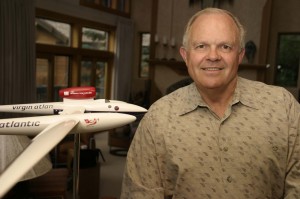
Recently, at his home in Beaver Creek, Colo., Steve Fossett discussed his many achievements, including his five world record nonstop circumnavigations of the Earth: as a long-distance solo balloonist, a sailor and a solo airplane pilot.
Steve Fossett says diversity is the most interesting aspect of his adventure sports history. The result of that diversity is official world records in five different sports venues: sailing, gliders, balloons, powered aircraft and airships.
“Most people get a world record in one sport,” he said. “In aviation, for instance, there are absolute world records in the various classes of aircraft. No one had ever held an absolute world record in more than one class of aircraft. I do now, in four classes of aircraft.” He adds that he’s working on the fifth.
Fossett has made five world record nonstop circumnavigations of the Earth: as a long-distance solo balloonist, a sailor and a solo airplane pilot. He’s set 88 aviation world records ratified by the Fédération Aéronautique Internationale, plus 23 sailing world records ratified by the World Sailing Speed Record Council.
At least part of Fossett’s adventurous nature has to do with his father, an Eagle Scout, introducing him to Boy Scouts at an early age.
“He made sure I joined the very first day I could, when I turned 11 years old,” Fossett said. “I ran with it from there. That was my most significant activity in my youth.”
Mountain climbing was his first sport.
“I climbed my first mountain when I was 12 years old, and continued on,” says the 62-year-old.
Born in Jackson, Tenn., April 22, 1944, Fossett grew up in Garden Grove, in Southern California. His first mountain was San Jacinto, the third highest mountain in the state.
“Over the years, I climbed in expeditions to various places in the world,” he said.
Fossett earned his Eagle Scout badge in 1957. His involvement with the Boy Scouts didn’t end with his childhood.
“I’m still very involved,” he said. “I’m on the national board and also the international board, the World Scout Committee.”
Steve Fossett is famous for a few ventures, but he’s accomplished much more you might not know about. Fossett, who divides his time between Carmel, Calif., and Beaver Creek, Colo., recently discussed those accomplishments at his Colorado home. He also details his many adventures in his new book, “Chasing the Wind: The Autobiography of Steve Fossett.” Written with Will Hasley, it was released this month in hardcover by Virgin Publishing.
Business first
Like many young people, when Fossett began attending Stanford University, he hadn’t decided what he was going to do with his life.
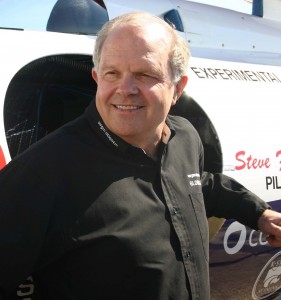
Steve Fossett has set official world records in five different sports venues: sailing, gliders, balloons, powered aircraft and airships.
“In those days, a lot of people aspired to somehow or another get into politics. I was the president of various clubs, and student body officer. I was very much involved in various leadership positions. Back in those days, I think I might even have been a good speaker,” he laughed. “But I recognized that wasn’t a logical pursuit for me.”
After graduating from Stanford in 1966 with a BA, Fossett went to the School of Business, Washington University, St. Louis. He graduated in 1968 with an MBA.
“I was distracted for the first five years of my business career by being in computer systems, and then I became interested in financial markets,” Fossett said. “That’s where I thrived.”
While in computer systems, Fossett started with IBM, and then worked for Marshall Fields. In between, he worked for Deloitte Touche as a consultant.
Once in that aspect of financial business, Fossett subsequently built a trading firm, based in Chicago. He formed Lakota Trading Inc., in 1980.
“I was on the floor of the exchanges myself for 15 years,” he said. “Five years after I started that, I started hiring people to build the company. We were on exchanges throughout the United States, and one time, even London.”
Fossett was highly successful as a floor trader.
“It was a natural for me,” he said. “I’m a very competitive person, and I’m also very methodical. Those two aspects are key to being successful in financial trading.”
The sports adventurer
In the half-dozen or so years after graduating, Fossett had little time for sports. But he soon began missing the “interesting things” he had done in high school and college.
“There was a period of time where I wasn’t doing anything except working for a living,” he said. “I became very frustrated with that. I finally made up my mind to start getting back into things. I resumed mountain climbing, and did some other things like running marathons and cross-country ski races—distance races, as you might expect—and car racing.”
A friendship led him to climbing some important mountains in the early 1980s.
“I became friends with Pat Morrow, who was trying to be the very first person to climb the Seven Summits (the highest mountain on each continent),” he said. “He did become the first person to do it, back in 1985. I climbed the last three mountains with him.”
With Morrow, he climbed Vinson in Antarctica, Carstenz in Australasia and Elbruz in Europe. Fossett eventually climbed six of the summits. One mountain Fossett didn’t conquer was Everest. He withdrew from climbing the mountain in 1992, particularly due to problems was asthma.
Fossett said people take up mountain climbing for the same reason one might begin scuba diving.
“People take up scuba diving because they get to go to great locations. It’s a good excuse to travel,” he laughed. “Mountain climbing also takes us to very interesting parts of the world. I did two expeditions to Antarctica—that was fascinating—Greenland, all the continents.”
Fossett’s first major sports project was swimming the English Channel, which he did in September 1985, from France to England.
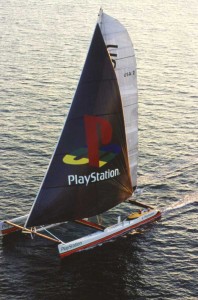
Steve Fossett had PlayStation (later renamed Cheyenne) built for the purpose of attacking the major sailing records. With the large catamaran, Fossett twice set the prestigious 24 Hour Record of Sailing and set a transatlantic record.
“I call that major because it was the first time I planned a project; it involved figuring out how to do something, and then training to do it,” he said. “That probably characterized my approach to other projects—a lot of planning and a lot of preparation. It wasn’t easy—at least it wasn’t easy for me, because I’m not a very good swimmer. I was never good enough to make the varsity swim team, or anything. But I found that you can just keep going in swimming; I realized that you can swim a very long time. It took me four attempts over a period of five years before I finally succeeded.”
For his first attempt, he trained for two months, swimming every day at least a mile.
“On subsequent attempts, I figured the system out, and I didn’t have to train quite that much. Predictably, it was an extremely slow swim. In fact, I won the endurance trophy that year,” he laughed. “That’s awarded to the person that makes the slowest swim of the year across the English Channel.”
The 270th person to swim the English Channel, Fossett accomplished his crossing in 22 hr, 15 min.
“The success rate is actually quite low,” he said. “Back when I was doing it, it was only 10 percent. I suspect nowadays, with all the good swimmers in the world, it’s much higher.”
The multimillionaire’s financial success eventually gave him the flexibility to make his own decision as to how much time he wanted to devote to business and how much to sports.
“At first, I’d do about six weeks a year on adventure sports, like climbing expeditions,” he said. “Eventually, I decided I no longer wanted to maximize my business career. In 1990, I moved from Chicago to Beaver Creek, with the complete realization that I couldn’t maximize my business career living here, but I could keep my company going.”
Since moving to Beaver Creek, Fossett estimates he’s spent 50 percent of his time on adventure sports, and the other half on his business, which is still headquartered in Chicago.
Iditarod, Le Mans and Ironman Triathlon
Fossett stayed active in climbing, but his next big adventure was entering the Iditarod Dogsled Race, a 1,165-mile race, in March 1992.
“That was perhaps the most fascinating thing I’ve ever done,” he said. “It took me five years, from the time I started dog sledding until I succeeded in finishing the Iditarod. Going up to the Yukon and Alaska to train dogs was interesting in itself.”
The idea came up while Fossett was at a British base in Antarctica.
“They had dog teams back then, and we started talking about it,” he recalled. “One of the guys on the climbing expedition said, ‘I know somebody who just won one of the major races. Maybe he’ll teach you how to do it.’ I was introduced, and went up to the Yukon and started learning the sport.”
Fossett finished 47th out of 76 starters.
“I was delighted to finish,” he said. “I never did another dogsled race after that. If you want to be competitive in the top 10 positions, you really need to devote your life to that one—live up there, have your own kennel of race dogs. That wasn’t what I wanted to do. I wanted the experience of finishing the race.”
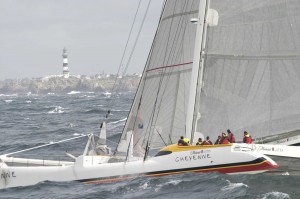
As the skipper of Cheyenne, Steve Fossett set the world record for fastest circumnavigation around the world in 2004. The official start/finish line of the World Sailing Speed Record Council is at the French island of Ouessant.
In the mid-1970s, Fossett had been involved in various forms of race car driving. He quit for some time, but started driving again in the early 1990s. That eventually led to driving the 24 Hours of Le Mans, in 1993 and 1996.
“I finally concluded that I could do best at endurance style racing. I can be very consistent; maybe I can’t be quite as quick as the professional drivers, but in endurance racing, the object is to not lose the car, spin out the car, or crash the car,” he laughed. “I found that the top professional drivers made more mistakes than I did, so I felt that there was an equalizing factor, that I actually had a chance to compete against the top drivers in an endurance race, where I could not compete with them in a short race.”
He didn’t prove his theory as far as winning, but he did in other ways.
“I didn’t have any really high placings,” he said. “I took a fourth place at Sebring, once. But I enjoyed it very much. Also, normally you have three drivers per car, and you trade off; drivers might drive one hour at Le Mans, for instance. Once I drove for four and a half hours. The reason they didn’t call me in to pit was because, rather than deteriorating from being tired, which is what you would normally experience, I would instead improve, because of getting more in the groove and not especially getting tired.”
He said that in all of the early sports activities, he played off the concept of endurance, because it’s available to most people.
“You can do endurance events just with the necessary preparation and training—including me,” he laughed.
Fossett has run several marathons, including major ones in Boston and New York, and the Leadville 100 in Colorado. Since he also enjoys cycling and “can get through the swimming,” another goal was to enter a triathlon. He entered the Ironman Triathlon in Hawaii in 1996.
“I managed to get an invitation to go in the Ironman, which is an experience in itself,” he said. “There are 1,500 people in the race, and it’s a whole culture of people who love to work out, and they spend their lives doing that.”
His Colorado home provided the setting for two cross-country skiing records. He set an Aspen to Vail record (59 hr, 53 min, 30 sec) in February 1998 and an Aspen to Eagle record (12 hr, 29 min) in February 2001.
Sailing
After moving to Beaver Creek and deciding he wanted to spend half of his time on sports projects, Fossett decided there were two things in particular he wanted to do.
“One was to sail a boat across the Atlantic, single-handed, and the other one was to fly a balloon around the world,” he said. “I started from scratch on those two projects in the early ’90s.”
One of the world’s most accomplished sailors, Fossett would eventually set 21 outright world records in sailing. He learned how to sail when he was still in his twenties, but his first sailboat race wasn’t until July 1993.
“It was a two-handed race around Britain and Ireland,” he said. “It was a 2,000-mile race, and we won it. That was a unique experience.”
He set his first world record in September 1993, sailing around Ireland. The record stands at 44 hr, 42 min.
Fossett set three single-handed records: the Pacific Ocean world record, Yokohama to San Francisco (20 days, 9 hr, 52 min), Aug. 5-24, 1996; Newport to Bermuda world record (40 hr, 51 min, 54 sec), June 1999; and Transpac, San Francisco-Hawaii (7 days, 22 hr, 38 min), June 27-July 5, 1999.
Fossett also established nine distance race records. He accomplished his goal of sailing a boat across the Atlantic solo when he competed in the most important single-handed race, the Route de Rhum, Nov. 6-10, 1994. He placed fifth overall.
“I competed mainly against the great French single-handed sailors,” he said. “I didn’t win that race, but it surprised the professional sailors that I could even do that well.”
In a race from Newport to Ensenada in April 1998, he established the world’s fastest yacht race record: 6 hr, 46 min, 40 sec, at 18.45 knots.
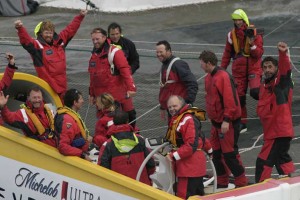
Steve Fossett and a crew of 12 victoriously sailed around the world on Cheyenne, achieving the most important record in sailing.
After owning two sailboats, Fossett had a large catamaran built for the purpose of attacking the major sailing records. PlayStation (later renamed Cheyenne), designed by famed multi-hull architects Gino Morrelli and Pete Melvin, was launched in 1998. The catamaran was constructed entirely out of aerospace technology carbon fiber.
“I found out I had one of the fastest sailboats in the world,” he said.
With PlayStation, Fossett twice set the prestigious 24 Hour Record of Sailing, 580 miles in March 1999 and 687 miles in October 2001. He set a transatlantic record (4 days, 17 hr, 28 min, 6 sec), Oct. 5-10, 2001, at 25.78 knots, from New York to England. That record was one of his best.
“That was broken just last week,” he said in mid-July.
In 2004, on Cheyenne, Fossett and a crew of 12 sailed around the world. The voyage, from Feb. 7 – April 5, set the world record for fastest circumnavigation around the world (58 days, 9 hr, 32 min, 45 sec), breaking the previous record by nearly six days.
Fossett retired from sailing in 2004.
“It was a very successful program, over quite a number of years; I broke most of the important world records,” he said. “In a couple of cases, my records were broken, and I went back and re-broke them. But then, I finally decided, ‘I’m not going to make a career out of defending my records.’ After getting the biggest record, the around-the-world record, I considered my sailing career complete.”
Fossett estimates that about half of his 23 records still stand.
“They’re getting broken one at a time,” he said.
Ballooning
Before seriously becoming involved in ballooning, Fossett first had to figure out what the most reliable long distance balloon would be, and which had the most proven equipment associated with it. He chose a Cameron (77,000 cubic foot), a design used for the 1992 Transatlantic Balloon Race.
One problem he had to overcome was the fact that there was no working autopilot for balloons at that time.
“You had to have it to fly solo,” he said. “I got one of my team members, Bruce Comstock, to develop the first workable balloon autopilot. Once he had done that, then it became possible.”
Fossett’s first major balloon adventure was a transatlantic flight from St. John’s, Canada, to Hamburg, Germany, made with Tim Cole (of Greeley, Colo.) as his copilot, Aug. 18-21, 1994.
“Then I decided that I might know enough to fly solo,” he said.
The following year, he made the first solo balloon flight across the Pacific, beginning in Seoul, Korea, on Feb. 17, and landing in Mendham, Saskatchewan, Canada, Feb. 21. On that flight, he set an absolute world distance record of 5,435.82 miles.
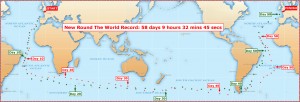
Steve Fossett began his 2004 round-the-world voyage on Feb. 7 and completed it on April 5. His time—58 days, 9 hr, 32 min, 45 sec—broke the previous record by nearly six days.
Out of all of the records Fossett has set, he believes the first solo round-the-world balloon flight is still the most important.
“It was a grandiose project,” he said. “It took seven years. We not only had to fly it, but we also had to develop the technology to fly at great durations and distances.”
Although other balloonists had their eyes set on the same goal of flying around the world in a balloon, initially Fossett was the only one who planned to go solo.
“In aviation, there’s something about solo flights that carries more significance than the crewed flights,” he said. “Alcock and Brown (Capt. John Alcock and Lt. Arthur Whitten Brown) made the first transatlantic flight in 1919, yet we don’t hear much about them. But, eight years later, Charles Lindbergh makes the first solo flight, and it’s highly significant. This pattern has repeated itself in the history of aviation.”
Because of different aspects of his background, Fossett thought he was the right person to do a solo flight.
“I knew how to do all the functions on the balloon, including navigating,” he said. “I also was used to the endurance aspects of living in high altitude environments, over 20,000 feet for a couple of weeks at a time, because of my mountain climbing experience.
There were practical reasons for wanting to go solo.
“Flying solo makes the equipment much lighter,” he said. “You’re only supporting the weight of one person, and personal supplies. I thought that was significant.”
Fossett had another big reason to want to go solo.
“Being a newcomer to the sport, I didn’t want to be perceived as the rich guy flying with an expert,” he said. “I wanted to be perceived as a balloonist myself, capable of doing it.”
Between 1996 and 2001, Fossett would make five solo round-the-world attempts before accomplishing his goal of setting the absolute RTW speed record.
“When I was first flying balloons, the distance record was 5,200 statute miles. I had to fly 22,000 miles to get around the world, and the longest duration anybody had flown a balloon was six days,” he said.
It was thought that it would take about 24 days to get around the world.
“We’re talking about an activity where we had to more than quadruple the capabilities of what had ever been done before in order to fly around the world,” Fossett said. “A lot of equipment development needed to take place, by myself and my competitors. We sometimes benefited from each other’s technological development.”
For his first solo RTW attempt, Fossett and the Solo Challenger departed Stratobowl, S.D., on Jan. 8, 1996. He landed at St. John, Canada, approximately 2,200 miles, three days later, on Jan. 11.
His second through fifth attempts were made in Solo Spirit. On his second attempt, he departed St. Louis, Mo., Jan. 13, 1997. He landed at Sultanpur, India, Jan. 20, setting an absolute world distance record of 10,360.61 miles, as well as an absolute world duration record of 6 days, 2 hr, 44 min.
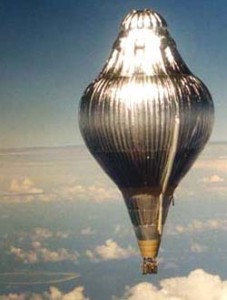
Fossett made five solo round-the-world attempts, between 1996 and 2001, before accomplishing his goal of setting the absolute RTW speed record. His first attempt was made in the Solo Challenger and second through fifth attempts in Solo Spirit (shown).
On his third attempt, Fossett again departed St. Louis, Mo., on Jan. 1, 1998, but this time traveled 5,802.94 miles, to Grechanaya, Russia. He said that each time he and his team made an attempt they’d learn a lot more about how to do it, and make the improvements necessary to hopefully make a successful flight the next time.
“Then, once again, I’d be surprised to find out that we didn’t have it all together yet,” he said. “It was a hell of a process.”
By 1998, the ballooning world knew it had gotten to the point where it was possible to fly a balloon around the world. Fossett had decided to try a new strategy. He was going to fly in the Southern Hemisphere.
“I was becoming frustrated with the permission problems of the Northern Hemisphere,” he said. “And some of these countries represent a bona fide danger. Flying over Libya, for instance, without permission, would be a risk of getting shot down. And there’s a risk of being shot down in various Moslem countries, if you’re flying low enough for surface-to-air missiles to reach you. Then, the jet stream goes directly through China. No one’s ever gotten permission to fly through the main core of the jet stream through that area of China.”
He said there were definitely political advantages of only crossing four countries (Argentina, Australia, New Zealand, and Chile), all friendly.
“Also, I believed that the jet streams, the wind patterns, would be smoother, and more reliable, because you’re crossing oceans,” he said. “The downside of the Southern Hemisphere is you’re over water most of the time, and you’re off the main shipping routes. If you go down, your life would be very much at risk. If your balloon went down over half the route in the Southern Hemisphere, it wouldn’t be possible to rescue you. In the Northern Hemisphere, you’re within reach of rescue almost 100 percent of the time.”
Fossett set off on Aug. 7, 1998, from Mendoza, Argentina, on his fourth attempt. Things were going well until Aug. 16. On that day, a violent thunderstorm brought a swift and brutal end to his flight. His balloon was ruptured. Fossett found himself falling 29,000 feet into the Coral Sea, 500 miles east of Australia.
Steve Fossett: Always “Scouting for New Adventures” Part 2











